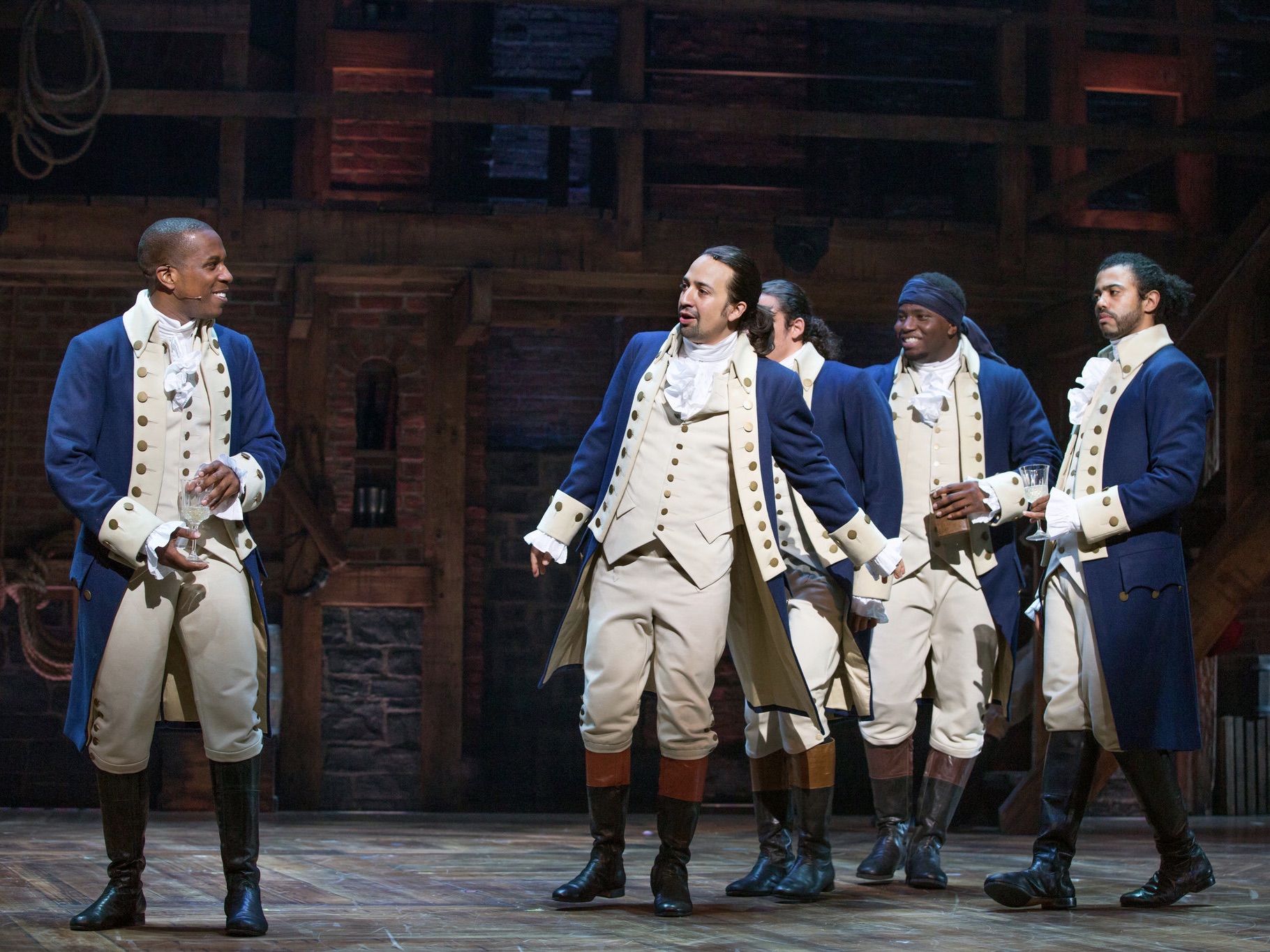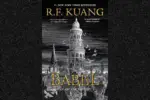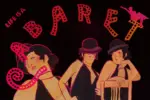Ever since the release of “Hamilton” on Disney+, fans new and old have been asking the question, “Does the show glorify history?”
Personally, I think the answer is complicated and best examined by looking at two points in particular. The first is the show’s treatment of slavery. The second is the show’s theme of legacy.
“A Bunch of Revolutionary Manumission Abolitionists?”
Alexander Hamilton uses this phrase early in the show to refer to himself, John Laurens, Hercules Mulligan and the Marquis de Lafayette. An abolitionist is someone who fought for the abolition of slavery at the governmental level. Manumission refers to the act of freeing slaves on a more personal level, which often involved a slave buying their own freedom from their master.
George Washington, Thomas Jefferson and James Madison owned slaves, but the latter two are the bad guys in “Hamilton,” and Washington is just an old guy stuck in his ways. Hamilton didn’t support slavery.
But during Act I, slavery is still legal in all of the colonies, including New York. Even Mulligan owns a slave, Cato, who became a spy for the revolution alongside his master. There are no records on Cato after the war, but considering that Mulligan joined Hamilton as one of the founders of the New York Manumission Society, it seems likely he was freed.
Laurens did attempt to lead a black battalion and was granted permission from the Continental Congress to do so. Lafayette advocated for the end of slavery and even owned a plantation in France, where he prohibited the purchase or sale of slaves.
So, yes, they were all, eventually, manumission abolitionists, but not in 1776. At this time, slavery was ingrained in the economy; even its opponents benefited from it.
When slavery does come up in “Hamilton,” it is brief. There’s a line in “My Shot,” a visual in “What’d I Miss?” and a put-down in “Cabinet Battle #1.” In a show about legacy, the country’s racist history is left behind. Writer Lin-Manuel Miranda acknowledges the criticisms and points to the time limits as the reason they were not further explored.
Appreciate you so much, @brokeymcpoverty. All the criticisms are valid. The sheer tonnage of complexities & failings of these people I couldn’t get. Or wrestled with but cut. I took 6 years and fit as much as I could in a 2.5 hour musical. Did my best. It’s all fair game. https://t.co/mjhU8sXS1U
— Lin-Manuel Miranda (@Lin_Manuel) July 6, 2020
While slavery is the example provided here, I’m sure a deeper exploration of “Hamilton” reveals more.
So, to return to the question, “Does the show glorify history?” I don’t think “glorify” is the right word, at least for the text of the show as written by Miranda and the production as directed by Thomas Kail.
It definitely glosses over some of the harder topics, but this is typical of historical fiction. Historical fiction takes an angle of a story and runs with it; the order of events gets changed, characters get combined and liberties are taken.
“Hamilton” cares about what gets Aaron Burr and Hamilton to their fateful duel, and in favor of focusing on his and Burr’s ambitions and political scheming, events like Hamilton’s fight against slavery get passed over.
While disappointing and upsetting, especially with the film getting released amid the current revival of the Black Lives Matter movement, there is a difference between artistic license and glorification.
“Hamilton” is a work of art, meant to be consumed and reinterpreted. As a piece of theater, just getting it to the stage requires multiple people interpreting Miranda’s words and melodies. The way people interact with the art can be the line between humanization and glorification.
The show’s characters were real people who did some good and, frankly, some terrible things. Sure, Miranda, Kail and the actors have made them their own characters, but it is imperative to remember they were real people too.
Their takes on the characters are not true historical fact. Treating the characters as if they were the historical figures does glorify them, and while I do not think Miranda does, I think it can be easy for audiences to do so. No one alive has ever met the Founding Fathers. Not everyone has read their correspondences or detailed biographies. Many audience members know them only by how the media portrays them.
“History has its eyes on you … ”
The above phrase is first used in the eponymous song, which comes near the end of the first act. Washington sings it to Hamilton before the Battle of Yorktown, reminding him he is now at the mercy of history, and he should behave in such a way. After all, “You have no control who lives, who dies, who tells your story.”
Both motifs are repeated throughout the show, which, at its core, is about history and legacy. “Hamilton” allows the people who were denied their place at the table during America’s founding the chance to reinterpret it for a new audience, which is amazing, and the show does not take its job lightly. At the same time, prior to the musical reaching pop-culture superstardom, few people knew anything other than Burr shot and killed Hamilton in a duel.
Notice that in the opening number, Burr is the only one introduced in a colored costume. Hamilton enters in white and is given a colored jacket later. The audience knows Burr; he is stained by history in a way the others, for the show’s purposes, are not.
Look at how the character of Jefferson is written. In my hometown of Richmond, Virginia, the historical Jefferson is a major cultural icon. When the “Hamilton” tour performed here, my father reported to me that Jefferson’s entrance caused a massive uproar of applause, catching the performers off guard. Basically, Virginians can tell you a lot about the man’s accomplishments, and probably some about his personality, too.
According to historical records of Jefferson, he was shy and soft-spoken, but Miranda’s Jefferson is the flashy icon Richmond holds him up to be. He wears fancy clothes, struts around the stage and freestyles, showing himself as a quick-thinking braggadocio. Why?
Because if you look at his writings, or even just his Wikipedia page, it certainly looks like he was a quick-thinking braggadocio. He was a Renaissance man and a prolific writer. Some of his best-known works, like the Declaration of Independence, are strong, assertive documents. It makes perfect sense to imagine him the way Miranda wrote him, because such an attitude and personality is his legacy.
If the words and lyrics of “Hamilton” glorify history, it is because Americans have already built such a legacy around the Founding Fathers. The Richmonders who cheered for Jefferson didn’t cheer for him because he was a slave owner, but because he founded the University of Virginia, because he was President, because he wrote the Declaration. The ugly parts of his story are ignored in order to uphold the pretty parts of his legacy.
If “Hamilton” did its job, it should have made you question the Founders’ legacies. It should send you running to libraries and Wikipedia and historical societies to find out more about the characters and their histories.
It should make you question who will tell your own personal story 240 years from now. It should hold up a mirror and say, “Look at the stories not being told, look at the people who were ignored and the people lost to history because of it.”
What happened to Cato? Who was Sally Hemmings? If anything, “Hamilton” glorifies the study of history and demonstrates why it’s so important. It takes a lot of artistic license, and it could have further explored the not-so-pretty parts of the Founding Fathers, but now it is in the hands of the fans to educate themselves about it.

















